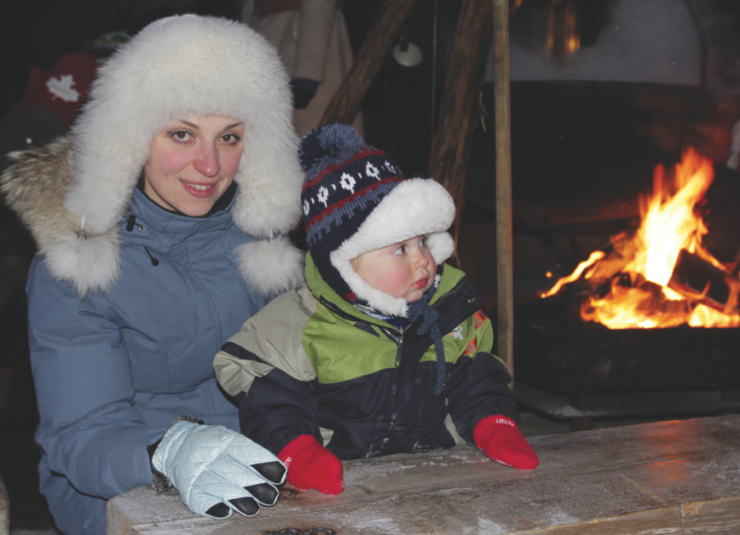UOSU PRESIDENT-ELECT DISCUSSES IMPACTS OF THE PROPOSAL ON AFFORDABILITY FOR STUDENTS
Ottawa’s Lansdowne redevelopment proposal, an ongoing project in partnership with Ottawa Sports and Entertainment Group (OSEG), has undergone significant changes – and critics aren’t happy.
City staff have been working with OSEG since June 2022 when the Lansdowne Partnership Sustainability Plan and Implementation Report was approved at council, and the proposed plan has gone through ongoing public consultation this year as well.
The amendments to the original proposal were released on Oct. 6, and include increasing the cost of the project from $86 million to $419 million, decreasing the number of high-rise towers from three to two, the decision to not build affordable housing on-site, and removing the green roof from the new proposed arena.
The newest proposal was released at a briefing by Mark Sutcliffe, city staff, and Mark Goudie president of OSEG. Sutcliffe, calling the project an investment rather than an expense, stated “We can’t repeat the mistakes of the past and let Lansdowne dwindle and crumble.”
The updates to the proposal bring residential units on the site down from 1,200 to 770. Additionally, as an alternative to providing affordable housing on-site, city staff stated that the equivalent value would instead be added to a reserve fund that would pay for affordable units located in other parts of the city.
In a video posted on YouTube, Sutcliffe acknowledged that the newest proposal significantly reduces dense housing at Lansdowne, and stated that it “opens up a significant amount of public space as well.”
The project has also faced notable criticisms from several community organizations.
In a meeting on Oct. 18, the Federation of Citizens Association (FCA), an organization representing over 70 community groups across Ottawa, voted to oppose the Lansdowne 2.0 proposal.
Robert Brinker, president of the FCA, said during the meeting that the organization believes there are more important uses of tax dollars than supporting a private, for-profit sports corporation.
“Our members are concerned about the enormous amount of public funds for a public-private partnership project based on dubious assumptions and uncertain benefits,” said Brinker.
The proposal has faced a lack of support from members of the Ottawa city council as well, with councillors Menard, Lo, Troster, Brown, Bradley, Leiper, and Kavanaugh expressing concerns and stating that they will likely not be supporting the proposal.
Menard, whose ward includes Lansdowne Park, has strongly advocated for improvements to the proposal through his “A Better Lansdowne” campaign, in response to the original Lansdowne plan.
These improvements include transportation solutions in the area, the removal of the third proposed skyscraper, at least 15 per cent of proposed housing being non-market housing units, no net loss of accessible greenspace, and public realm enhancements.
After the release of the latest report, Menard released “the good, the bad, and the ugly” parts of the changes, and expressed that the report failed to meet the priorities outlined by the public, urban design professionals, and the offices of city councillors.
“A rejuvenation of Lansdowne Park is needed, but what is needed is a plan that prioritizes public amenities, public access, and the public good to make it a success,” cited Menard.
The Lansdowne area is approximately 3 kilometres away from the University of Ottawa campus and 1.5 kilometres away from the Carleton University campus. The Fulcrum spoke with Delphine Robitaille, president-elect of the University of Ottawa Students’ Union, about the impacts that the Lansdowne proposal would have on students in the neighborhood in an interview.
Robitaille described students as an essential part of the Ottawa community and economy, and stated that despite this, students are often afterthoughts in new developments, including the one at Lansdowne.
“The new arena, event and retail spaces will likely depend on part-time, minimum wage labour from students who will not be able to afford [to live] in the vicinity. Lansdowne 2.0 has the opportunity to position itself as a modern, public-private partnership that prioritizes sustainability and affordability,” said Robitaille.
Robitaille also discussed affordable housing for students, saying “it is also an investment into the dynamism and prosperity of the city. It keeps graduates and skilled workers here.”
In terms of next steps, the proposal will proceed to a final vote on Nov. 10 at city council.




